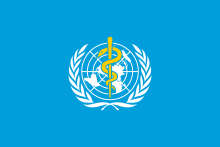طب

طب (Medicine) سائنس جي اها شاخ آهي جنھن ۾ بيمارين جي تشخيص ۽ روڪ ٿام لاءِ ڪوشش ڪئي ويندي آھي. طب مريضن جي سنڀال، تشخيص جو انتظام ڪرڻ، روڪٿام، علاج، انهن جي زخم يا بيماري جي خاتمي، ۽ انهن جي صحت کي فروغ ڏيڻ جي سائنس ۽ مشق آهي.[1] [2] طب مختلف قسم جي صحت جي سار سنڀال جي طريقن تي مشتمل آهي جيڪي بيمارين جي روڪٿام ۽ علاج ذريعي صحت کي برقرار رکڻ ۽ بحال ڪرڻ لاءِ ٺاهيا ويا آهن. معاصر طب، بايوميڊيڪل سائنسز، بايوميڊيڪل ريسرچ، جينيٽڪس ۽ طبي ٽيڪنالاجي تي، زخمن ۽ مرض جي تشخيص، علاج ۽ روڪڻ لاءِ لاڳو ٿئي ٿي، خاص طور تي دواسازي يا سرجري ذريعي، پر ان سان گڏ علاج جي ذريعي، جيئن مختلف نفسياتي علاج، طبي آلات، حياتيات ۽ مشينن ذريعي بيمارين جي تشخيص تي لاڳو ٿئي ٿي.[3]
طبي عمل ذريعي مختلف اندازن ۾ جاندار جي معمول جي صحت کي برقرار رکي سگهجي ٿو. بيمارين جي تشخيص لاءِ طبي سائنس ۽ طبي ٽيڪنيڀياس جو استعمال ڪجي ٿو، جنھن بعد دوا ۽ سرجري ذريعي علاج ڪيو ويندو آهي. جديد دور ۾ مختلف طبي طريقا دريافت ٿي چڪا آهن، جئين شعاعن جي ذريعي علاج، گرمائش ذريعي علاج وغيره.
طب پراگاڻيڪ دور کان وٺي مشق ڪئي وئي آهي ۽ گهڻو ڪري هن وقت تائين اهو هڪ فن هو (تخليق ۽ مهارت جو هڪ علائقو)، اڪثر ڪري مقامي ثقافت جي مذهبي ۽ فلسفياتي عقيدن سان تعلق رکي ٿو. مثال طور، هڪ دوا وارو ماڻهو جڙي ٻوٽي لڳائيندو ۽ شفا لاءِ دعائون چوندو هو. تازن صدين ۾، جديد سائنس جي اچڻ کان وٺي، اڪثر دوائون فن ۽ سائنس جو مجموعو بڻجي چڪيون آهن (ٻئي بنيادي ۽ لاڳو، طبي سائنس جي ڇنڊ ڇاڻ هيٺ). مثال طور، جڏهن سيون جي سلائي ڪرڻ جي ٽيڪنڪ مشق جي ذريعي سکي ويندي، هي هڪ فن آهي، اهو علم سائنس جي ذريعي پيدا ٿئي ٿو جيڪو سيلولر ۽ ماليڪيولر سطح تي ٽشوز ۾ سلائي جي ڪارڻ ٿئي ٿو. طب جي سائنس سان اڳ جي شڪلون، جيڪي هاڻي روايتي طب طور سڃاڻي وڃن ٿيون، عام طور تي سائنسي دوائن جي غير موجودگيءَ ۾ استعمال ٿيندي رهيو آهن ۽ ان ڪري ان کي متبادل طب سڏيو وڃي ٿو. سائنسي طب کان ٻاهر اخلاقي، حفاظت ۽ افاديت جي خدشن سان گڏ متبادل علاج کي ڪوڙو چئبو آهي.
اصطلاح
[سنواريو]طبي مشق: ادارا: شاخون: تعليم ۽ قانوني ڪنٽرول: طبي اخلاقيات: تاريخ: معيار، ڪارڪردگي، ۽ رسائي: پڻ ڏسو:
Medicine has been practiced since prehistoric times, and for most of this time it was an art (an area of creativity and skill), frequently having connections to the religious and philosophical beliefs of local culture. For example, a medicine man would apply herbs and say prayers for healing, or an ancient philosopher and physician would apply bloodletting according to the theories of humorism. In recent centuries, since the advent of modern science, most medicine has become a combination of art and science (both basic and applied, under the umbrella of medical science). For example, while stitching technique for sutures is an art learned through practice, knowledge of what happens at the cellular and molecular level in the tissues being stitched arises through science.
Prescientific forms of medicine, now known as traditional medicine or folk medicine, remain commonly used in the absence of scientific medicine and are thus called alternative medicine. Alternative treatments outside of scientific medicine with ethical, safety and efficacy concerns are termed quackery.
خارجي لنڪس
[سنواريو]| طب بابت وڌيڪ ڏسو وڪيپيڊيا جي ڀينر رٿائن ۾: | |
| معني ڏسو وِڪِشنري تي | |
| تصويرون ۽ وڊيو ڏسو وڪي ڪامنز تي | |
| تربيتي مواد ڏسو وڪي ورسٽي تي | |
| نيوز اسٽوريز وڪي نيوز تان | |
| چَوِڻيون Quotations وڪي ڪوٽ تان | |
| سورس ٽيڪسٽس وڪي سورس تان | |
| درسي ڪتاب وڪي ڪتاب تان | |
حوالا
[سنواريو]- ↑ Firth, John (2020). "Science in medicine: when, how, and what". Oxford textbook of medicine. Oxford: Oxford University Press. ISBN 978-0-19-874669-0.
- ↑ Saunders, John (June 2000). "The practice of clinical medicine as an art and as a science". Med Humanit 26 (1): 18–22. doi:. ISSN 1468-215X. PMID 12484313.
- ↑ "Dictionary, medicine". وقت 4 March 2016 تي اصل کان آرڪائيو ٿيل. حاصل ڪيل 2 December 2013. Unknown parameter
|url-status=ignored (مدد)
